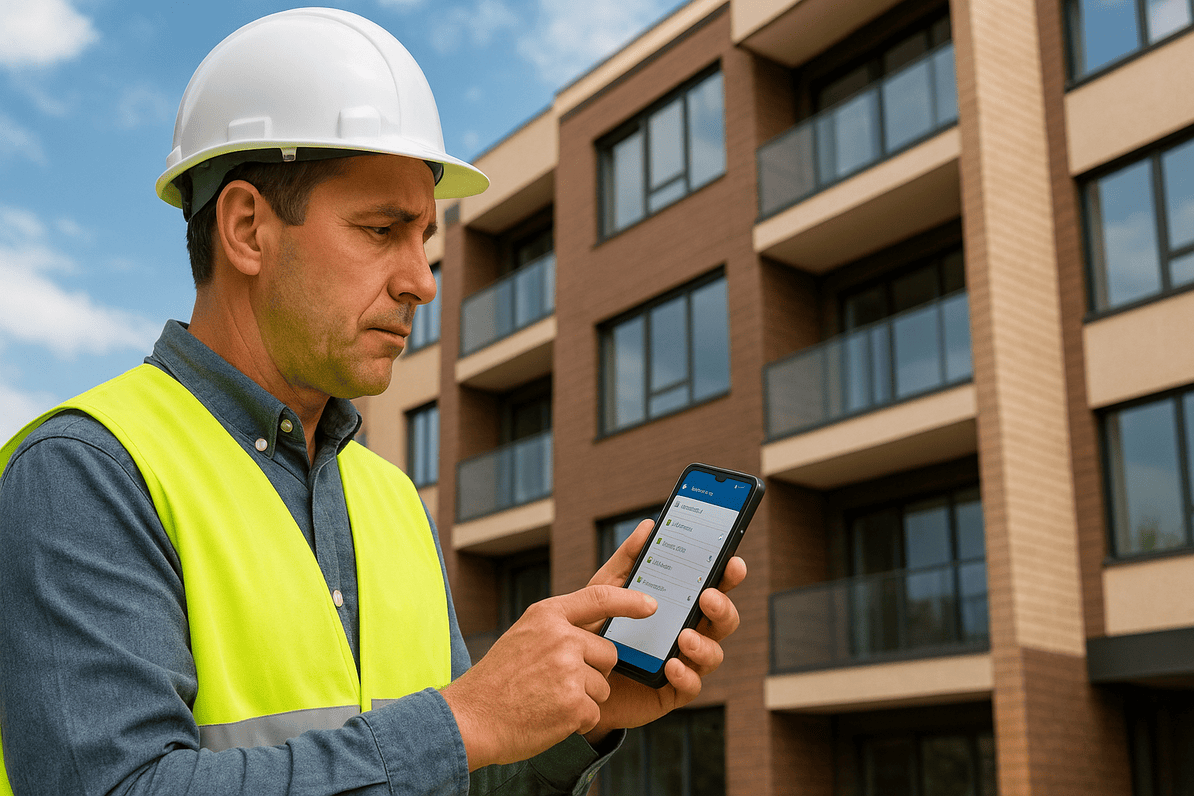Starting a Building Inspection Business in Australia: Your 2025 Roadmap
Thinking of launching a building inspection business in Australia? Discover key steps, tools, and insights for success in 2025.
Your Roadmap to Success: A Guide to Starting a Building Inspection Business
The demand for professional building inspectors in Australia continues to grow as property owners, investors, and developers place greater emphasis on safety, compliance, and construction quality. If you’re planning to start a building inspection business in 2025, there’s never been a better time. But between licensing requirements, compliance paperwork, and managing client relationships, getting started can feel overwhelming.
This guide breaks down the process step by step and shows how modern tools, such as building inspection software and CRM systems, can make your new venture efficient, compliant, and profitable.
Step 1: Understand the Building Inspection Industry
Before diving in, take time to understand what the role of a building inspector entails. In Australia, inspectors assess residential, commercial, and industrial properties to identify defects, safety risks, and non-compliance with local building codes.
Key inspection types include:
- Pre-purchase inspections for buyers evaluating property conditions.
- New construction inspections ensuring compliance with design and code requirements.
- Pest and timber inspections commonly required in coastal or humid regions.
- Dilapidation reports documenting property conditions before nearby construction.
Having a clear understanding of your target market - whether homebuyers, real estate agents, or builders - will help shape your business strategy, pricing, and marketing efforts.
Step 2: Get Qualified and Licensed
Each state and territory has its own regulations for building inspectors. You’ll typically need:
- Relevant qualifications, such as a Diploma or Certificate IV in Building and Construction (Building).
- Industry experience, particularly in construction, carpentry, or engineering.
- Licensing or registration, which varies by location (check your local building authority).
It’s also crucial to maintain up-to-date insurance, including professional indemnity and public liability coverage.
Tip: Joining professional associations, such as the Master Builders Association (MBA) or the Housing Industry Association (HIA), can strengthen your credibility and connect you with valuable industry resources.
Step 3: Build a Business Plan and Brand
A strong business plan will guide your growth and help secure financing if needed. Your plan should cover:
- Market analysis: Who are your competitors and potential clients?
- Pricing strategy: Will you charge per inspection or offer bundled packages?
- Marketing plan: How will you attract clients? Online ads, partnerships, or referrals?
- Technology strategy: What digital tools will you use to manage inspections, clients, and compliance?
Developing a professional brand identity - complete with a logo, website, and consistent messaging - will position you as trustworthy and capable in a competitive field.
Step 4: Invest in the Right Technology
Technology is now a game-changer in the inspection industry. Manual checklists, paper reports, and lost files can quickly derail productivity and professionalism.
This is where building inspection software, such as the Building Inspection App by Formitize, comes in. Designed specifically for Australian inspectors, it brings everything together in one easy-to-use system:
- Digital forms and reports: Customizable templates ensure accuracy and professionalism.
- Photo and annotation tools: Capture evidence directly from your mobile device.
- Automated client communication: Send reports, invoices, and reminders instantly.
- Compliance tracking: Stay aligned with Australian Standards and record-keeping requirements.
- Integrated CRM: Manage leads, clients, and job history all in one place.
Using the right building inspection app means you can spend less time on admin and more time in the field, improving your turnaround and client satisfaction.
Step 5: Set Up Operations and Processes
Once your business structure and tools are in place, focus on creating smooth operational workflows.
Key areas to systemise include:
- Job scheduling: Use a digital calendar or CRM to assign and track inspections.
- Reporting workflow: Set up templates that automatically populate with client and property data.
- Invoicing and payments: Integrate your inspection app with accounting software for instant billing.
- Record management: Store all reports, photos, and communications securely in the cloud.
Having these processes automated through a platform like Formitize ensures every client interaction is consistent, compliant, and documented.
Step 6: Market Your Services
To grow your business, visibility is key. Begin by creating a professional website that showcases your expertise, service areas, and customer testimonials.
Then focus on:
- Search Engine Optimization (SEO): Use terms like building inspection apps Australia and building inspection software to attract local traffic.
- Social media marketing: Share before-and-after reports, inspection tips, and client success stories to engage your audience.
- Google Business Profile: Make it easy for clients to find and contact you.
- Partnerships: Connect with real estate agents, property managers, and developers for steady referral work.
Building your reputation through consistent, quality service will be your most powerful marketing tool.
Step 7: Stay Compliant and Continue Learning
Regulations and building codes evolve constantly, and so should your business. Schedule time each year to review:
- Changes in local building laws and safety standards.
- Updates to insurance or licensing requirements.
- New features in your building inspection software or CRM.
Many inspectors also complete professional development courses to stay competitive and expand into new service areas, such as energy efficiency or sustainability assessments.
Step 8: Scale and Diversify
Once your operations are running smoothly, look for opportunities to scale. You could:
- Hire additional inspectors to expand your coverage area.
- Offer new services, such as thermal imaging or pre-handover reports.
- Use your building inspection CRM to manage larger client portfolios or real estate partnerships.
Automation and mobility from Formitize’s all-in-one inspection platform make scaling simple without losing control of quality or compliance.
Ready to Build Your Future?
Starting a building inspection business in Australia is a rewarding path for professionals passionate about quality and safety. By combining the right qualifications, smart planning, and powerful digital tools, you can build a business that’s compliant, efficient, and ready to grow.
Take your first step today. Start your free trial of Building Inspection App and see how simple it is to run your business smarter in 2025.






